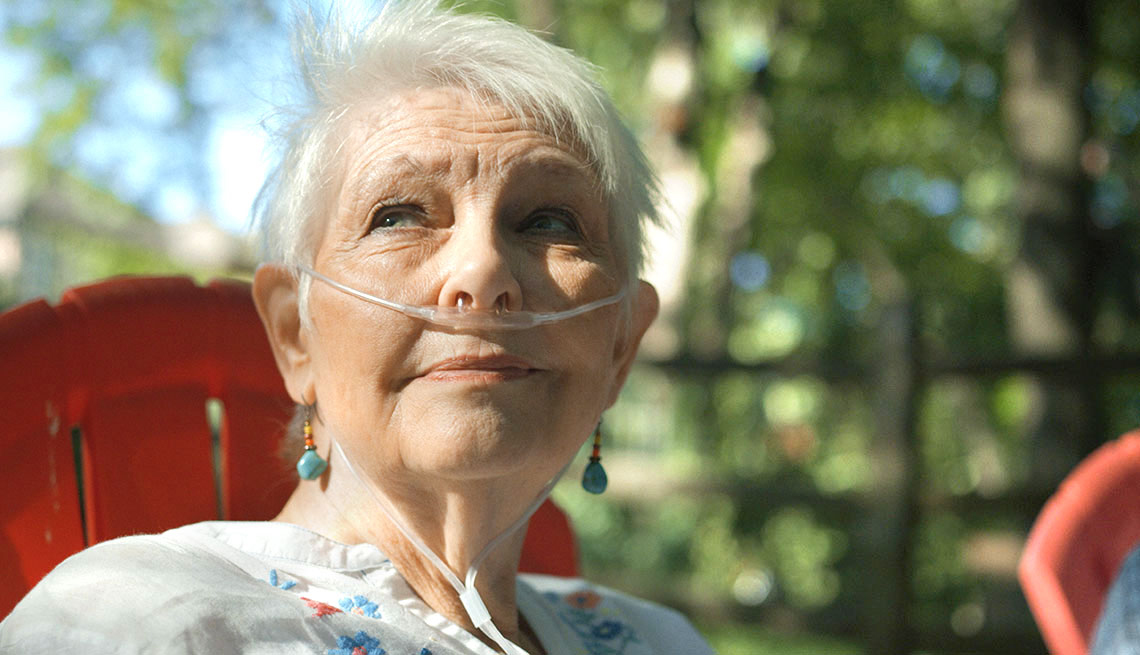How to Recognize a Rare Lung Disease
Common symptoms could be signs of something serious; why it's important to speak with a doctor

Developed with input from Dr. Gerard J. Criner, Professor and Chair of the Dept. of Thoracic Medicine, School of Medicine, Temple University
A dry cough and feeling out of breath can be symptoms of many respiratory conditions, but they may also signal an uncommon, serious lung disease called idiopathic pulmonary fibrosis (IPF). Since the symptoms are common and nonspecific, IPF often goes undiagnosed or misdiagnosed, allowing the disease to worsen over time, or progress, before it’s recognized. If you or someone you know is experiencing these symptoms, it’s important to speak with a doctor to determine the cause.
If you are diagnosed with IPF, a doctor can help you find ways to manage the condition.
“I let my patients know that the progression of IPF cannot be stopped or reversed,” says Dr. Gerard J. Criner, Professor and Chair of the Department of Thoracic Medicine, School of Medicine at Temple University, “so it is best to discuss early on what can be done to manage the disease.”
About IPF
IPF results in permanent scarring (or fibrosis) of the lungs, which, over time, can make it hard for oxygen to get into the blood and cause shortness of breath, particularly when walking and exercising. The cause of IPF is unknown, but certain risk factors include smoking, gastroesophageal reflux disease (GERD), infections and environmental pollutants. It is most common in men over 50, and the median survival after diagnosis with IPF is 3–5 years.
How is IPF diagnosed?
An IPF diagnosis is an involved process that may require multiple doctors and tests. If IPF is suspected, a doctor (likely a pulmonologist, who specializes in lung and respiratory diseases) will complete a physical exam and ask questions about medical and family histories and work and home environments. The doctor will also examine the lungs and likely schedule a series of chest images and laboratory tests. IPF also causes a Velcro®-like crackle deep in the lungs that a doctor can hear with a stethoscope.
Understanding your options after being diagnosed with IPF
An IPF diagnosis can feel overwhelming, so people who are diagnosed should meet with their doctor early on to discuss ways to manage the condition. While lung function loss due to IPF cannot be reversed, there are ways to help manage the condition. These include:
- FDA-approved treatments. There is no cure for IPF, but the first medicines to treat the disease were approved in October 2014.
- Pulmonary rehabilitation programs, which may help manage symptoms of breathlessness and offer a variety of services, including overall body conditioning, exercise training and breathing skills, nutrition management and help with managing the stress and emotional impact of IPF.
- Oxygen therapy, which may be recommended during physical activities, times of exertion or full-time. While adjusting to life with supplemental oxygen can feel overwhelming, it may help ease breathlessness during some of your day-to-day activities.
- Lifestyle changes, such as changing your diet or quitting smoking and managing other conditions you might have.
- Mental and emotional support, like joining a support group, which provides an opportunity to connect with others with similar experiences.
- Symptom management and/or palliative care. IPF treatment does not address the symptoms of IPF, but there are ways to help those living with IPF feel better. Palliative care also does not specifically treat IPF, but it is care designed to maintain comfort for people living with a serious illness like IPF.


